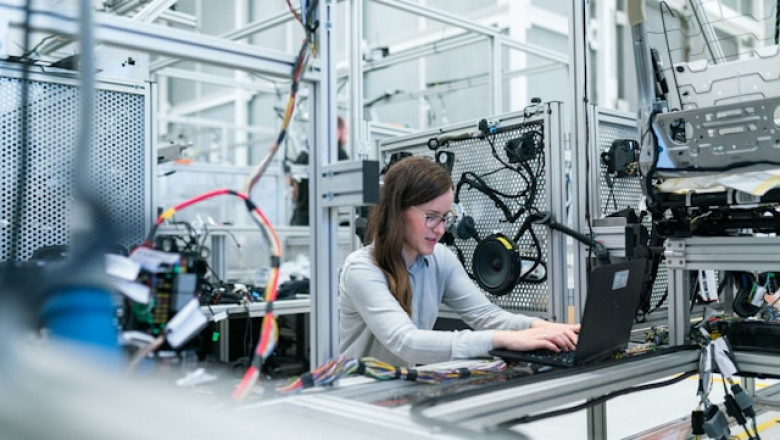views
In recent years, autonomous systems development has emerged as a transformative force, revolutionizing the fields of engineering and defense. These systems—comprised of advanced robotics, artificial intelligence, and sophisticated sensor technologies—are reshaping how objectives are achieved in environments that demand precision, speed, and safety. Meanwhile, aerospace composites solutions complement these advancements by providing lightweight, strong, and versatile materials that enhance the performance and durability of autonomous platforms.
This article explores how autonomous systems are influencing the future of engineering and defense, the role of aerospace composites solutions in this evolution, and answers common questions about these groundbreaking aerospace composites solutions.
The Rise of Autonomous Systems in Engineering
Engineering projects, ranging from construction to manufacturing, have traditionally relied on human labor and manual control. However, the advent of autonomous systems is changing this paradigm.
- Increased Efficiency and Precision
Autonomous systems are capable of completing complex tasks with a high degree of accuracy and repeatability. In engineering, this means machinery and robots can perform operations such as welding, assembly, and materials handling with minimal error, increasing productivity and reducing waste.
- Enhanced Safety
Many engineering tasks occur in hazardous environments—think of oil rigs, mining operations, or high-rise construction. Autonomous systems can perform risky functions without exposing human workers to danger, significantly reducing accident rates.
- Data-Driven Decision Making
Equipped with advanced sensors and processing capabilities, autonomous systems generate real-time data that aids engineers in monitoring projects, detecting issues early, and optimizing workflows. This integration of artificial intelligence leads to smarter, more adaptive engineering solutions.
The Impact on Defense Technologies
Autonomous systems are equally, if not more, transformative in defense applications:
- Unmanned Vehicles and Drones
Autonomous drones and ground vehicles have become critical assets for surveillance, reconnaissance, and combat missions. These systems can operate in environments too dangerous or inaccessible for human soldiers, providing persistent intelligence and reducing risks.
- Rapid Response and Precision
Autonomous defense systems can make rapid decisions and execute precise maneuvers, enhancing operational effectiveness. This capability is particularly vital in high-stakes situations where milliseconds matter.
- Force Multiplication
By integrating autonomous systems, defense forces can leverage smaller human teams to control larger fleets of unmanned vehicles, increasing reach and operational capacity without proportionally increasing personnel.
The Role of Aerospace Composites Solutions
As autonomous platforms become more aerial robotics, the demand on materials also escalates. Aerospace composites solutions have stepped in to meet these challenges by offering lightweight, robust, and adaptable materials.
- Weight Reduction for Increased Endurance
Composites like carbon fiber-reinforced polymers reduce the weight of unmanned aerial vehicles and land-based autonomous systems. Less weight translates to longer flight times, higher payload capacities, and greater operational flexibility.
- Superior Strength and Durability
Composite materials offer high strength-to-weight ratios and resistance to environmental factors such as corrosion or temperature extremes, essential for military and industrial applications.
- Design Flexibility
Composites allow designers to create complex shapes optimized for aerodynamics and stealth capabilities, which are critical in defense technology.
Common Questions About Autonomous Systems and Aerospace Composites
What are autonomous systems in engineering and defense?
They are machines or robotic platforms capable of performing tasks independently using AI and sensor inputs, often in environments that are risky or complex.
How do aerospace composites improve autonomous systems?
They provide lightweight, strong, and durable materials that enhance the performance, efficiency, and lifespan of unmanned vehicles and robots.
Are autonomous systems safe in defense applications?
When properly designed and tested, autonomous systems improve safety by reducing human exposure to dangerous situations.
What industries benefit from autonomous systems development?
Besides defense, industries like manufacturing, construction, agriculture, and logistics are leveraging autonomous technologies.
Do autonomous systems replace humans in defense and engineering?
They augment human capabilities, handling dangerous or repetitive tasks while allowing humans to focus on strategic decision-making.
Looking Ahead: The Future of Autonomous Systems
The integration of autonomous systems and aerospace composites solutions is driving a future where machines can perform complex, adaptive tasks reliably and efficiently. Ongoing research continues to push the boundaries, with developments in AI, sensor technologies, and smart materials promising even more capable systems.
In defense, autonomous platforms will play increasing roles in surveillance, logistics, and combat, enhancing security while reducing risks to personnel. In engineering, these systems will enable safer, faster construction and manufacturing processes, pushing productivity to new heights.
Final Thoughts
Autonomous systems are revolutionizing autonomous systems development and defense by combining artificial intelligence with advanced materials like aerospace composites. This powerful synergy results in safer operations, enhanced capabilities, and higher efficiency. As these technologies mature, they will unlock unprecedented opportunities for innovation and performance in some of the most demanding fields on the planet.
For engineers, defense professionals, and technology enthusiasts, understanding and embracing these advances is crucial. The future belongs to those who can harness the full potential of autonomous systems, driving progress while safeguarding human lives.














Comments
0 comment